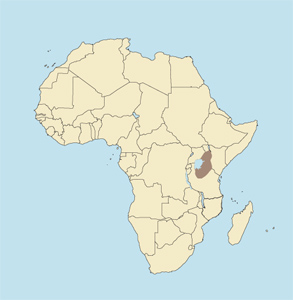 |
Gazella thomsoni thomsoni
Gacela de Thomson (Sp), Thomsongazelle (G), Gazelle de Thomson (F). Called "Tommy" by nearly everyone. Named for explorer Joseph Thomson (1858-1895), its European discoverer.
DESCRIPTION Shoulder height 25-27 inches (63-69 cm). Weight 50-60 pounds (23-27 kg).
The Thomson gazelle is one of the handsomest gazelles, graceful and distinctively patterned. It is the most common gazelle in East Africa, well known to all visitors there. The upperparts are a deep sandy rufous, with a lighter flank band below, and below that a wide black band that is in immediate contact with the white underparts. The white rump is bordered by narrow black pygal stripes. The tail is all black. There is a chestnut blaze from the base of the horns to the muzzle, a white eye ring continuing as a stripe to the muzzle, and a reddish or blackish cheek stripe below the eye. The horns (both sexes) are fairly large for an animal this size, being nearly twice as long as the head. They are strongly ringed and often nearly straight, curving slightly backward for most of their length, with the tips bending a little forward and upward. Females are similar, but notably smaller, and have much smaller horns.
The nasalis race from west of the Rift Valley has more divergent horns, a well-defined black nose spot, a black eye stripe, and wider, more distinct pygal stripes. The thomsoni race from east of the Rift Valley has more parallel horns, no nose spot, a reddish eye stripe, and narrow, less distinct pygal stripes.
BEHAVIOR Gregarious, living in loosely organized herds-harem herds, young male herds, mother-and-young herds. Old males are sometimes solitary. During seasonal migrations, it gathers in herds of thousands, sometimes along with other species such as Grant gazelle, impala, wildebeest or zebra. Breeding males are territorial. Breeding occurs throughout the year, with peaks toward the end of the rainy season. One young is born after six months gestation. Females are sexually mature at one year, so that two births a year are possible. Lifespan up to 10 years.
Most activity is early and late in the day. Almost entirely a grazer, although it browses to some extent. Requires water daily when the grass is dry, but can go without it when feeding on new grass. Eyesight, hearing and sense of smell are good. The tail is constantly in motion. When alarmed will stot or pronk, similar to a springbok.
HABITAT Open plains and short grasslands.
DISTRIBUTION Kenya and northern Tanzania.
TAXONOMIC NOTES Includes two listed subspecies: nasalis (west of the Great Rift Valley and north of a line from Speke Gulf on Lake Victoria to the Lake Eyasi escarpment), and thomsoni (east of the Great Rift Valley and south of a line from Speke Gulf to the Lake Eyasi escarpment), with thomsoni Günther, 1884 having priority.
|





